Unsure about your French table manners? Click Here to download > > How to avoid these 10 food etiquette mistakes !
- Home ›
- Culture & Civilization of France ›
- 9 Historical French Love Stories
9 Tragic French Love Stories That Rattled History
Published 9 February 2025 by Leyla Alyanak — Parisian by birth, Lyonnaise by adoption, historian by passion
France and love have long been entwined, but not all French love stories ended in bliss. These 9 (mostly) tragic romances shook history, shaping kings, revolutions and even the fate of empires.
For centuries, France has honed its reputation as a land of love. L’amour!
Historically, there’s a reason for all this.
During the Middle Ages, troubadours celebrated courtly love (l’amour courtois) – a romantic ideal filled with chivalry. Later, Renaissance writers wrote about love, and the Romantic era sealed France’s image as the land of passion.
By the late 19th century, Paris had become synonymous with romance. The cobblestoned streets, iconic landmarks and bohemian cafés of the so-called City of Love attracted artists, writers and musicians.
Some of the best French novels or plays by authors like Gustave Flaubert, Victor Hugo, Alexandre Dumas and Edmond Rostand made waves in the world of romantic French literature.
The Eiffel Tower, built in 1889, added to Paris’s romantic mystique.
The French language, often called “the language of love,” was seen as melodious and flowing.
And French culture – whether in art, fashion or cuisine – overflowed with themes of love and desire.
Even today, there are plenty of stereotypes of the French as fabulous lovers, or at least, outstanding seductors (or charmers), based as much on myth as reality.
9 French love stories that moved the needle of history
- 1. Abelard and Héloïse (1115-1117)
- 2. Charles VII and Agnès Sorel (1443/4-1450)
- 3. François I and the Duchesse d’Etampes (1526-1547)
- 4. Henri II and Diane de Poitiers (1538-1559)
- 5. Voltaire and Émilie du Châtelet (1734-1749)
- 6. Marie Antoinette and Axel von Fersen (1778-1791)
- 7. Camille and Lucile Desmoulins (1784-1794)
- 8. Napoleon Bonaparte and Joséphine de Beauharnais (1795-1810)
- 9. Napoleon III and Eugenia de Montijo (1853-1873)
These 9 famous French love stories helped shape history
Behind the myths, there were real lovers – passionate, powerful and sometimes even dangerous.
These nine famous French love stories were so powerful that each, in some way, helped shape the history of France.
However, they didn't always end well...
1. Abelard and Héloïse (1115-1117)
One of the most famous and beloved of these is the story of Pierre Abelard, a brilliant philosopher and theologian, and his young and gifted pupil, Héloïse.
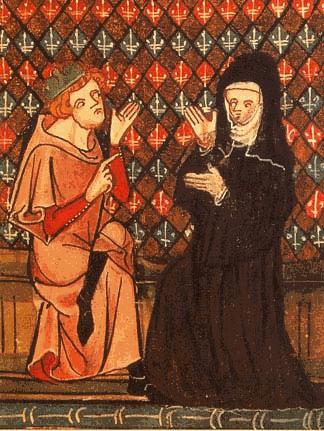
The two would admire each other intellectually and eventually, this would lead to love.
And then, tragedy: Héloïse would get pregnant.
They married secretly to avoid scandal – Abelard was older, and in a position of authority over his student. Héloïse’s uncle, Canon Fulbert, had hired (and trusted!) Abelard, so this was an unacceptable betrayal.
Remember, these were the Middle Ages, when love was "noble", lofty (and often chaste). The high-minded troubadours made sure love and women would be idealized through their poetry.
Canon Fulbert was understandably incensed and organized an attack on Abelard, who was caught, and castrated. The marriage broke up: Abelard became a monk, Héloïse a nun, and both retreated into religious life.
But their connection didn’t end and they wrote passionate letters to each other for the rest of their lives. The letters spoke of love, faith and sacrifice and are some of the most famous love letters in history:
“Dear Abelard, pity my despair! Was ever any thing so miserable! The higher you raised me above other women who envied me your love, the more sensible am I now of the loss of your heart. I was exalted to the top of happiness, only that I might have a more terrible fall.”
2. Charles VII and Agnès Sorel (1443/4-1450)
Love would soon emerge from the shadows and even royal mistresses would come out into the open.
The first of these was lady-in-waiting Agnès Sorel, whose beauty and charm caught the eye of King Charles VII: she became the first officially recognized royal mistress of a French king.
Charles VII was, by the way, the same king who met Joan of Arc at the Château de Chinon and gave her an army to fight the English.
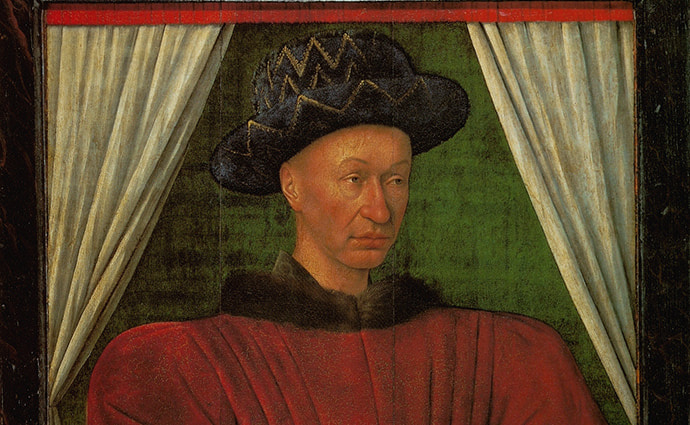 Charles VII: Agnès Sorel would of course provide him with companionship, but she went further by playing a role in court politics as the Hundred Years’ War was winding down.
Charles VII: Agnès Sorel would of course provide him with companionship, but she went further by playing a role in court politics as the Hundred Years’ War was winding down.Agnès wasn't just an idle mistress, and her presence would have an impact at court.
Historians believe she pushed Charles VII to take stronger action against the English. This helped France reconquer Normandy and Guyenne, contributing to the French victory in the Hundred Years’ War, a major historical milestone.
Sorel’s relationship with Charles VII also caused tensions at court.
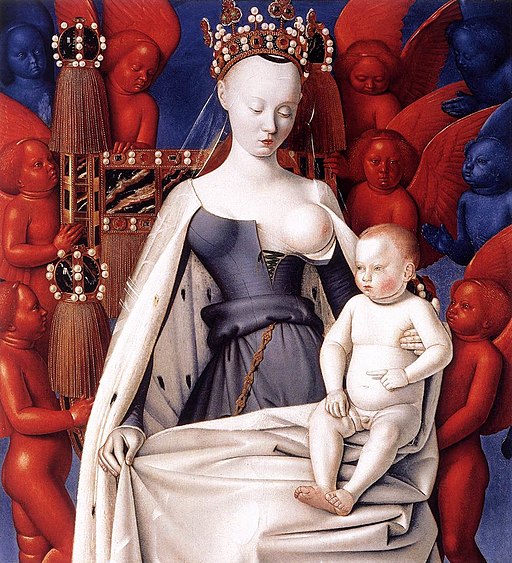 Beyond politics, Sorel also left a cultural legacy. She inspired Jean Fouquet’s famous painting, Virgin and Child Surrounded by Angels, where she was depicted as the Virgin Mary – quite a scandalous move at the time.
Beyond politics, Sorel also left a cultural legacy. She inspired Jean Fouquet’s famous painting, Virgin and Child Surrounded by Angels, where she was depicted as the Virgin Mary – quite a scandalous move at the time.The king’s son, the future Louis XI, despised her, a feud that became so severe that Louis was exiled from court in 1446. This pitted son against father and weakened the monarchy, creating a power struggle that forced factions to choose between one or the other.
A stronger Charles VII meant his impatient and ambitious son would have to wait longer to exercise power.
When Charles VII eventually died in 1461, Louis wasted no time in dismantling his father’s administration and persecuting many of his closest advisors.
And while Agnès didn’t scheme against Louis, at least we don’t think so, Louis XI spent his reign trying to centralize power and prevent any outside influence (including that of mistresses) from affecting royal decisions.
3. François I and the Duchesse d’Etampes (1526-1547)
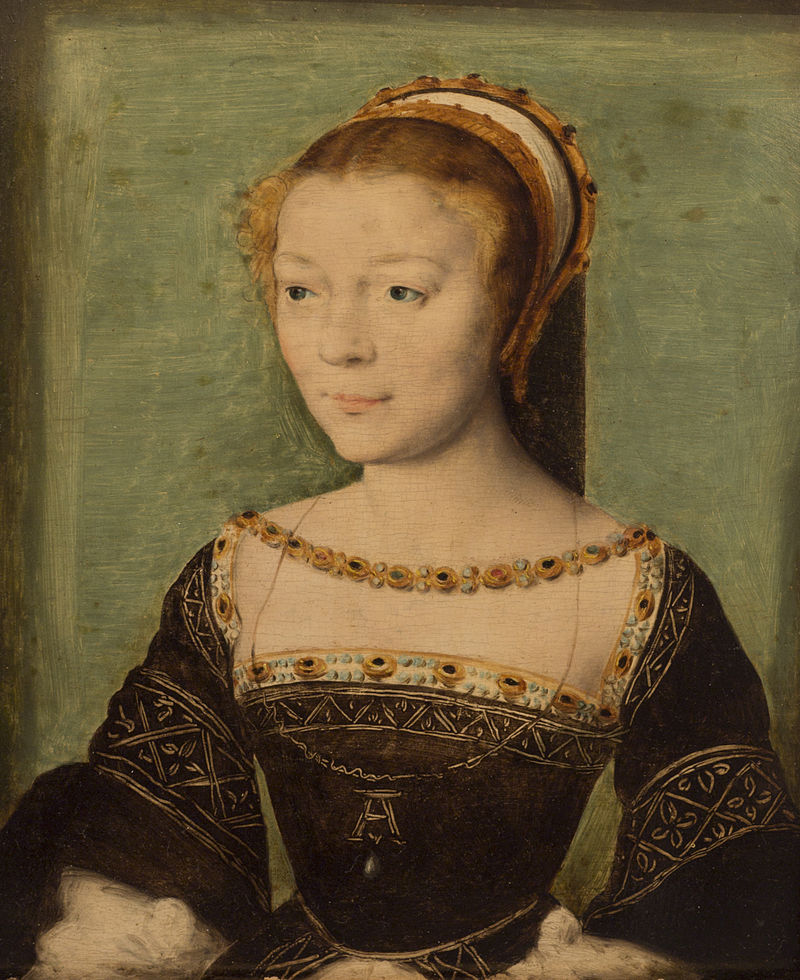 Anne de Pisseleu, Duchesse d'Etampes, promoted culture and helped expand the royal library, which later became the foundation of the Bibliothèque nationale de France. Painting in oil by Corneille de Lyon.
Anne de Pisseleu, Duchesse d'Etampes, promoted culture and helped expand the royal library, which later became the foundation of the Bibliothèque nationale de France. Painting in oil by Corneille de Lyon.Less than a century later, another mistress would attract the limelight and use her position to influence decisions at court.
A well-educated noblewoman, Anne de Pisseleu, Duchesse d’Étampes, supported artists and thinkers during the flourishing French Renaissance under King François I, encouraging his natural tendency to support artists, writers and scholars.
More intriguingly, she supported moderate Protestant ideas, helping the king show greater (albeit occasional) tolerance towards them.
Sadly, this would anger powerful Catholic groups at court and set the stage for future religious conflicts. This religious friction eventually led to the French Wars of Religion that would erupt 15 years after the François I's death.
When he died, Anne's influence ended overnight.
His son Henri II despised her, as did Henri's mistress, Diane de Poitiers, a strong Catholic.
Anne was concerned about Diane's growing influence and worked hard to undermine her. She worried Diane would replace her as the most powerful woman in France… which is exactly what happened.
With her lover Henri II on the throne, Diane became the Number One woman of the realm, and orchestrated Anne’s downfall. Anne was exiled from politics and died in obscurity, reminding us that a royal mistress in Renaissance France had both extraordinary power and extraordinary fragility.
4. Henri II and Diane de Poitiers (1538-1559)
While Diane de Poitiers was a lady-in-waiting and governess to the royal children at François I’s court, she built a special bond with young Henri, the future king. That bond would eventually become a love affair, despite their 20-year age difference.
Henri’s devotion to Diane was unwavering. He gave her major political responsibilities and showered her with gifts, most notably the Château de Chenonceau, which his wife, Catherine de Medici, had so wanted.
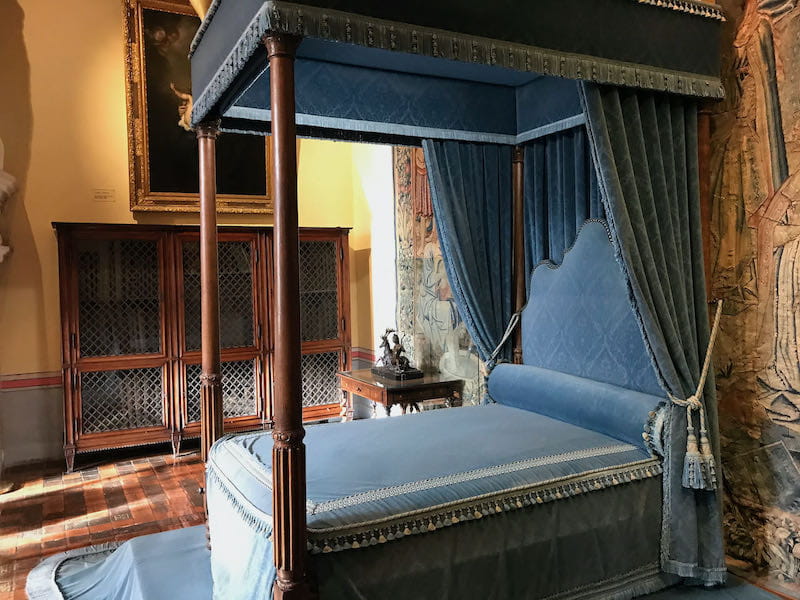 Diane's bedroom at Chenonceau ©OffbeatFrance
Diane's bedroom at Chenonceau ©OffbeatFranceDiane was known as a great beauty in her time, and became pretty much a co-ruler with Henri II, whom she supported and helped. She controlled access to him, influenced state decisions – and even signed state documents alongside him.
Many at court feared and resented her influence over the king, especially the queen, who was aware of the affair but knew there was little she could do about it.
As long as the king was alive, Diane's position was unshakeable.
When Henri died in a jousting accident in 1559, his wife Catherine jumped on the opportunity to reclaim Chenonceau, forcing Diane to return to her personal estate, the Château d’Anet.
Diane would spend the rest of her life in exile, suffering the same fate at Catherine’s hands as she herself had imposed years earlier on the Duchesse d’Étampes.
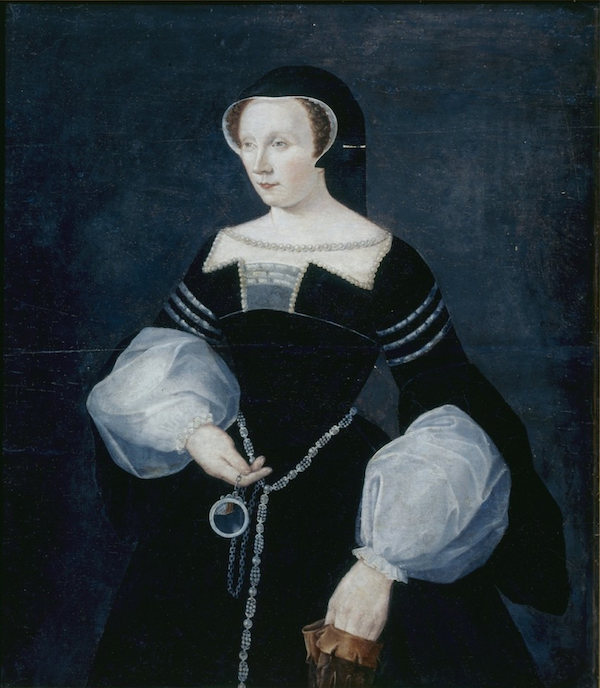
No royal mistress until then had equalled Diane in influence.
She elevated the role of mistress to near-sovereign status.
She didn’t just influence the king – she just about governed alongside him, becoming more powerful than the queen.
Unlike Anne de Pisseleu, who mostly influenced diplomacy and religious policy under François I, Diane's powers were unheard of for a mistress at the time.
Because of her influence on politics, the powerful and very Catholic de Guise family remained in favor, which would later influence the Wars of Religion.
5. Voltaire and Émilie du Châtelet (1734-1749)
Not all lovers influenced history through politics.
One relationship which made cultural and intellectual history was that of Voltaire and Émilie du Châtelet.
Voltaire's writing and thinking had huge impact on the French Revolution, and his beliefs in freedom of expression and religious tolerance continue to influence us today.
As for Émilie du Châtelet, she was one of the most brilliant thinkers of her time, a mathematician and physicist who became Voltaire’s lover and intellectual companion.
After getting into political trouble in Paris, Voltaire sought refuge in the Château de Cirey, where he and Émilie went about their scholarly interests. The castle, by the way, belonged to Émilie’s husband, who didn’t seem to mind the extra guest. He was away often as a military officer and Voltaire did, after all, pay for renovations at the château.
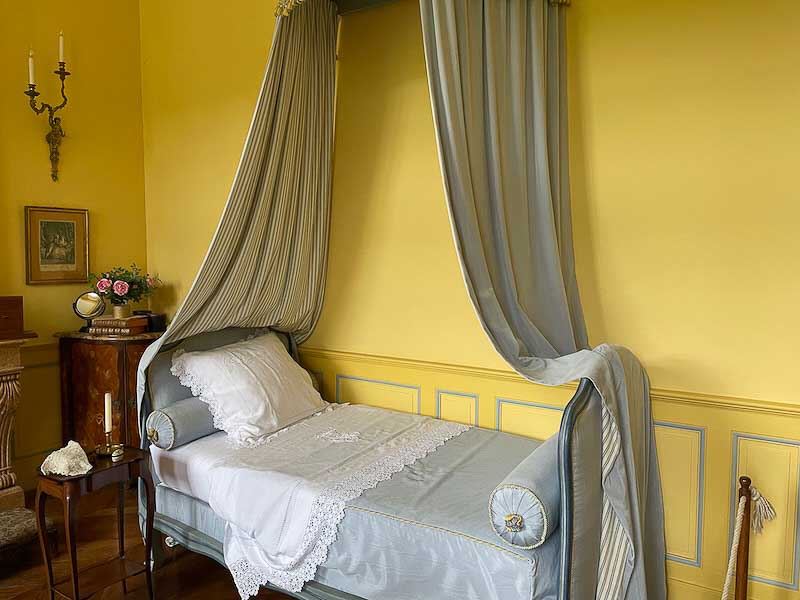 Émilie's bedroom at the Château de Cirey ©OffbeatFrance
Émilie's bedroom at the Château de Cirey ©OffbeatFranceThe relationship between Voltaire and Émilie would last 15 years.
The couple transformed Cirey into an intellectual hub, collecting books and conducting scientific experiments.
Émilie translated Newton’s Principia Mathematica into French – the first and still best translation of the work, while Voltaire, influenced by her expertise, wrote Elements of the Philosophy of Newton, which played a key role in making Newtonian physics popular in France.
This collaboration contributed to moving the Enlightenment forward in France.
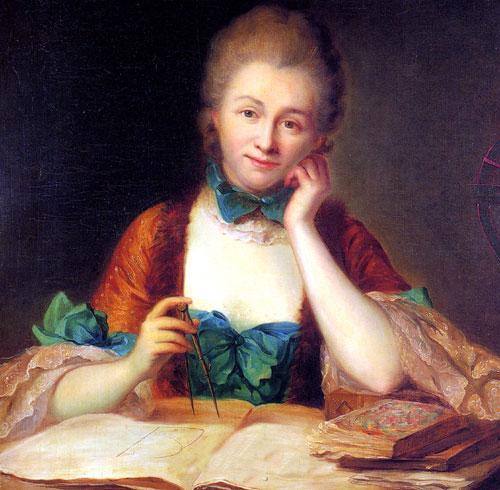 Emilie du Châtelet at work
Emilie du Châtelet at workBy excelling in fields dominated by men, Émilie challenged the gender norms of the time and encouraged Voltaire to develop his own critiques of religion and the monarchy. This helped weaken both and fueled revolutionary thinking.
She also helped shape currents that would surface in the Revolution’s (flawed) ideals of equality.
Together, the couple helped create an environment where questioning political and religious authority became increasingly acceptable.
6. Marie Antoinette and Axel von Fersen (1778-1791)
Marie-Antoinette was marched (well, horse-and-carted) to the guillotine nine months after her husband Louis XVI suffered the same fate during the French Revolution.
He may have been her husband, but he wasn’t the only one dear to her heart: she is believed to have had a lasting relationship, possibly romantic, with count Axel von Fersen, a Swedish nobleman and diplomat.
They met at a masked ball, and he became a frequent visitor at court, corresponding with her regularly.
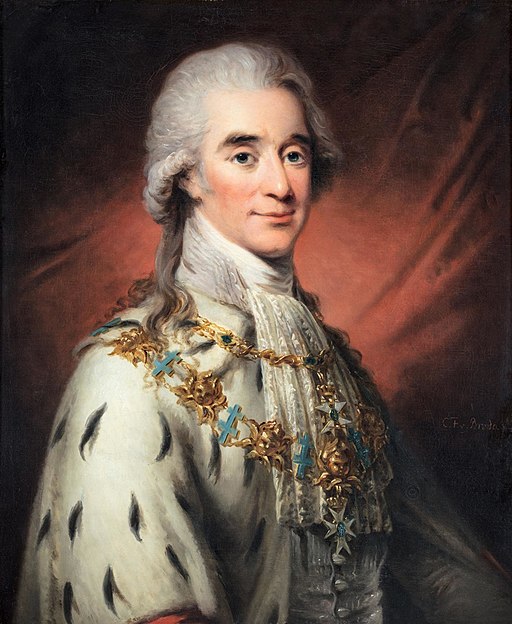 Axel von Fersen, intimate friend or perhaps lover of Marie-Antoinette. Oil painting by Carl Frederik von Breda
Axel von Fersen, intimate friend or perhaps lover of Marie-Antoinette. Oil painting by Carl Frederik von BredaTheir relationship remains one of the great unknowns of French romantic history.
Some historians believe it might have been sentimental or even sexual, while others insist it was an intense but platonic friendship. We may never know, but the relationship contributed to Marie-Antoinette’s image as a scheming queen more loyal to foreigners than to France.
That didn't stop Fersen from trying to help the entire royal family escape Paris during the Revolution. The escape failed, but not because of Fersen – he had suggested a lighter, faster carriage but Marie-Antoinette insisted on a larger one.
The attempted escape branded the monarchs as traitors: whereas a constitutional monarchy had been under consideration, the flight attempt changed people's minds and increasingly, there was talk of abolishing the monarchy altogether.
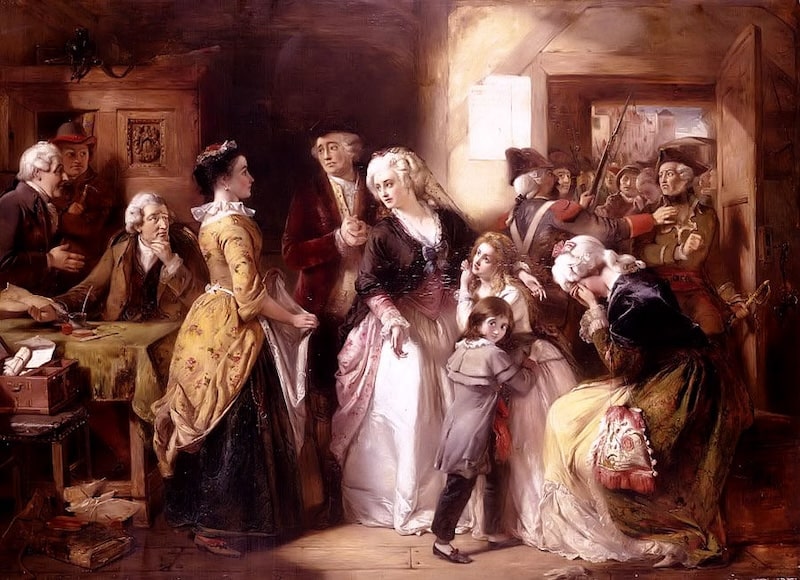 Louis XVI and his family being arrested at Varennes after trying to escape Paris. Painting by Thomas Falcon Marshall
Louis XVI and his family being arrested at Varennes after trying to escape Paris. Painting by Thomas Falcon MarshallHad the escape succeeded, the king might have gathered foreign support from abroad and launched a counter-revolution, delaying the collapse of the monarchy.
Marie-Antoinette’s relationship with Fersen may not have caused the French Revolution, but it did help speed things up.
As for Fersen, he outlived Marie-Antoinette by 17 years but also died violently at the hands of a mob in Sweden during unrest there.
7. Camille and Lucile Desmoulins (1784-1794)
Another powerful relationship with a revolutionary backdrop was that of Camille and Lucile Desmoulins.
Camille, an influential journalist, first met Lucile Duplessis in 1784 when she was just 11, and he was in his early twenties. He eventually fell in love with her and waited until she (barely) reached maturity (at 17) before marrying her, in a ceremony attended by revolutionary luminaries such as close friend Robespierre.
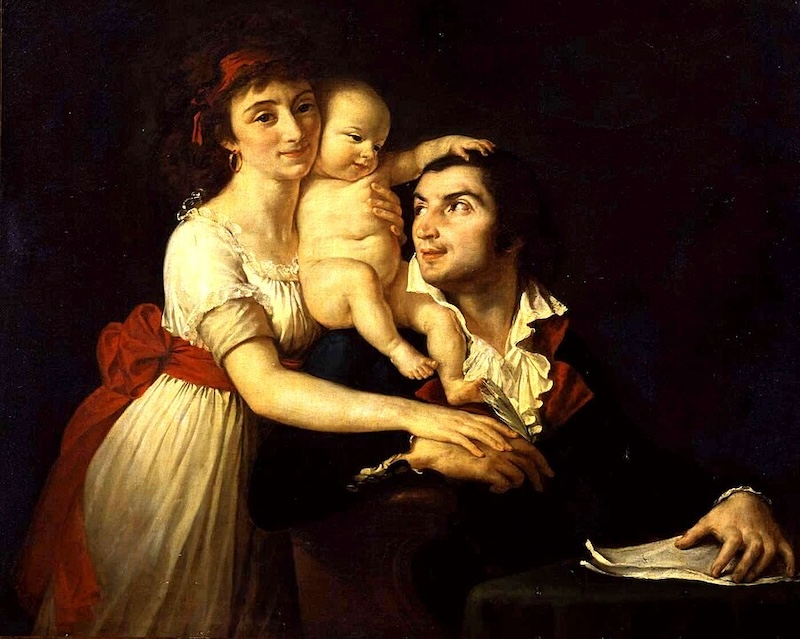 A revolutionary couple: Lucile and Camille Desmoulins, and their son Horace. From the workshop of Jacques-Louis David.
A revolutionary couple: Lucile and Camille Desmoulins, and their son Horace. From the workshop of Jacques-Louis David.They were quite the zealous revolutionary couple, attending political events together. She often documented her experiences and her (passionate) letters give us a peek into society and politics at the time.
She also influenced Camille’s thinking, and likely steered him towards more moderate positions. Once a fiery revolutionary, Camille eventually turned against the Revolution’s excesses and mass executions during the Reign of Terror.
He was arrested for treason and executed, despite Lucile’s efforts to free him – for which she herself was arrested and guillotined. This showed how utterly out of control the Revolution had become.
Had his push for less brutality succeeded, the Reign of Terror might have been shortened (it lasted 10 months from 5 September 1793 to 28 July 1794). Instead, it led to his downfall, turning key revolutionaries against him.
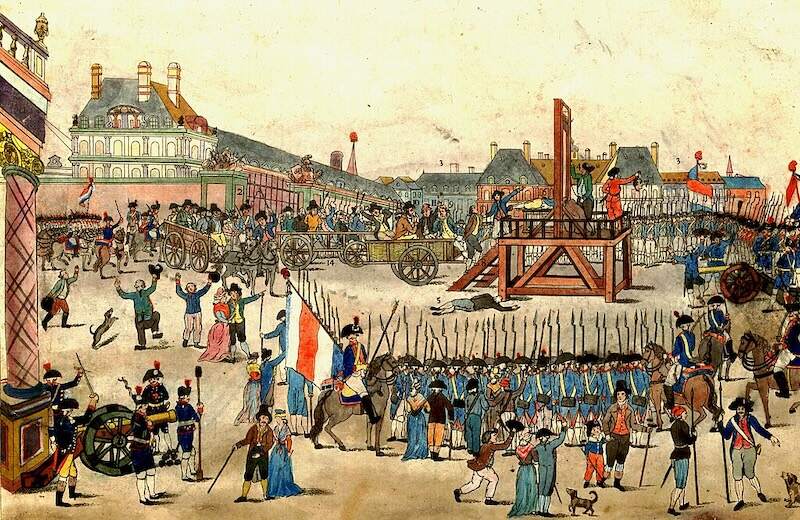 Robespierre's execution during the Reign of Terror
Robespierre's execution during the Reign of TerrorThe impact of the Desmoulins’ tragic love story is also symbolic: while they paid the ultimate price in one of history’s most tumultuous periods, their story also demonstrates how even the most romantic ideals could not survive the violence of the Revolution.
8. Napoleon Bonaparte and Joséphine de Beauharnais (1795-1809)
Another luminary whose reputation was built on the ashes of the Revolution was Napoleon Bonaparte.
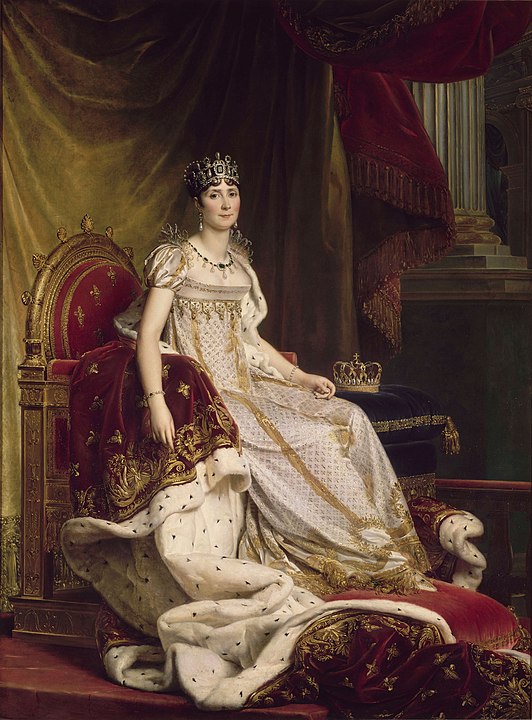 Oil painting of Empress Josephine by François Gérard
Oil painting of Empress Josephine by François GérardHis relationship with Joséphine de Beauharnais was a passionate, politically significant, and ultimately tragic love story that shaped the course of French history.
When Napoleon met Josephine in 1795, she was a widow and socialite (with several notable lovers) and he was still a relatively obscure Corsican officer (although his name was getting around).
He fell deeply in love and they married a year later. Napoleon left for war, and while he was away he wrote passionate letters to her, until he found out about her quite public infidelities. The letters would become cooler…
Still, they stayed married, and she became empress in 1804, helping Napoleon navigate the political pitfalls of Paris as he expanded his power.
But one thing stood in their way: she could not have any more children (beyond the two with her first husband, nobleman Alexandre de Beauharnais). So Napoleon divorced her.
She was devastated but remained loyal to him. They continued writing to one another and he would support her even after his marriage to Marie-Louise of Austria.
His new wife would give him a son, but Napoleon would never see him once he was forced into exile; his son would die of tuberculosis at 21.
As for Josephine, Napoleon would later admit that she was “the only woman I ever truly loved”.
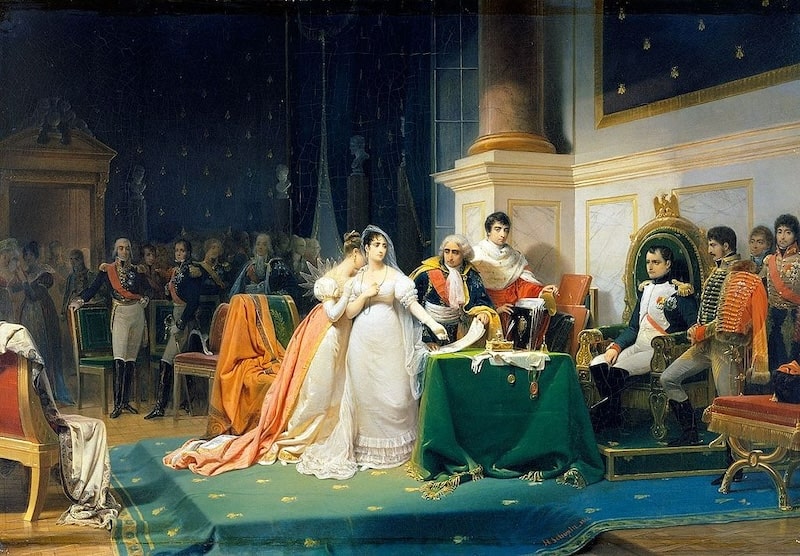 Napoleon and Josephine divorce in December 1809. Oil painting by Henri Frédéric Schopin.
Napoleon and Josephine divorce in December 1809. Oil painting by Henri Frédéric Schopin.The relationship would be a factor in politics and history.
Their marriage accelerated Napoleon’s social and political success – she helped legitimize his rule; without her, the aristocracy might have challenged the rapid rise of this minor Corsican.
Their divorce (and his remarriage) altered the course of European history. Without the Austrian marriage, Napoleon’s alliances in Europe might have played out differently. He thought he was strengthening his relations with Austria through Marie-Louise; eventually, Austria betrayed him.
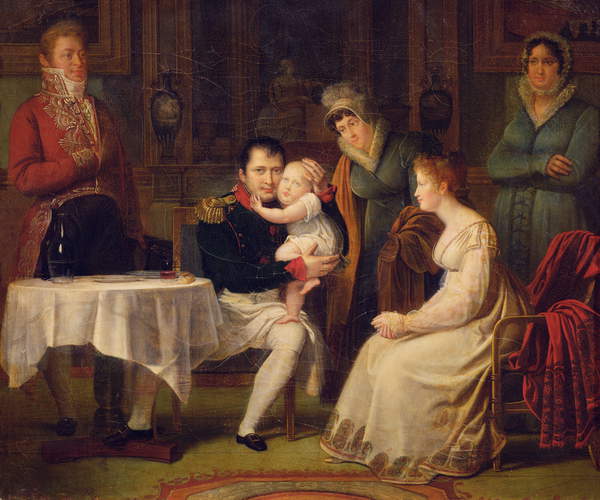 Napoleon, his second wife Marie-Louise, and the King of Rome, as his son, Napoleon II, was known. Painting by Alexandre Menjaud
Napoleon, his second wife Marie-Louise, and the King of Rome, as his son, Napoleon II, was known. Painting by Alexandre MenjaudHad he stayed married to Josephine, he would not have had an heir and would therefore be weaker without an heir. He was, after all, a newcomer trying to build a new dynasty.
That said, with Josephine, he might have focused more on France and less on the rest of Europe, avoiding the messy entanglements with Austrian politics which eventually led to his downfall.
But perhaps most important of all: when he was exiled, Marie-Louise never fought for his release and returned to Austria. Josephine, on the other hand, was extremely well connected in France and it is likely she would have fought tooth and nail for his release.
Who knows what might have happened had she succeeded...
9. Napoleon III and Eugenia de Montijo (1853-1873)
Napoleon I's son may not have lived to inherit France’s imperial throne, but the emperor did have a nephew to carry on the tradition. In a strange twist of fate, that nephew was linked to his first wife, Josephine.
Napoleon III was the son of his uncle's younger brother Louis and his wife Hortense, who just happened to be Josephine’s daughter. (Keeping track of France’s dynastic history often requires headache medicine…)
Anyway, Napoleon III fell in love with Eugénie de Montijo, a conservative and deeply religious Spanish (minor) noblewoman. He married her (she would have nothing to do with him until he proposed) and they were devoted to one another, although, having done her duty, she apparently never shared his bed again after their son was born.
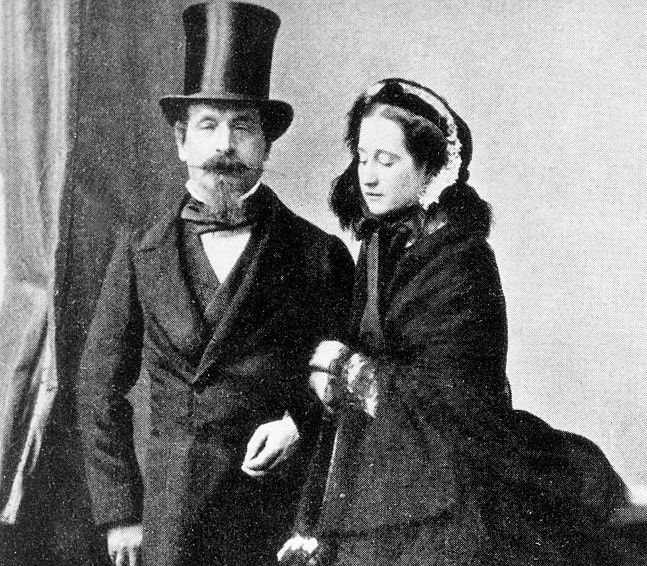
In counterpoint to Eugénie’s traditionalism, Napoleon III was pragmatic, liberal even, but he would move away from those leanings because of his wife.
One could say Eugénie’s influence wasn’t particularly beneficial.
Early on, she managed to alienate several of France’s allies who might have otherwise sided with the French during the Franco-Prussian War. She supported France’s disastrous intervention in Mexico, which ended with the execution of Emperor Maximilian I and seriously tarnished France’s international reputation. She opposed her husband’s efforts to enact liberal reforms, and perhaps most damaging, she supported the Habsburgs of Austria, which isolated France and prevented any kind of understanding with Prussia. Some think she may have even encouraged France’s war with the Prussians, believing it would restore France’s glory.
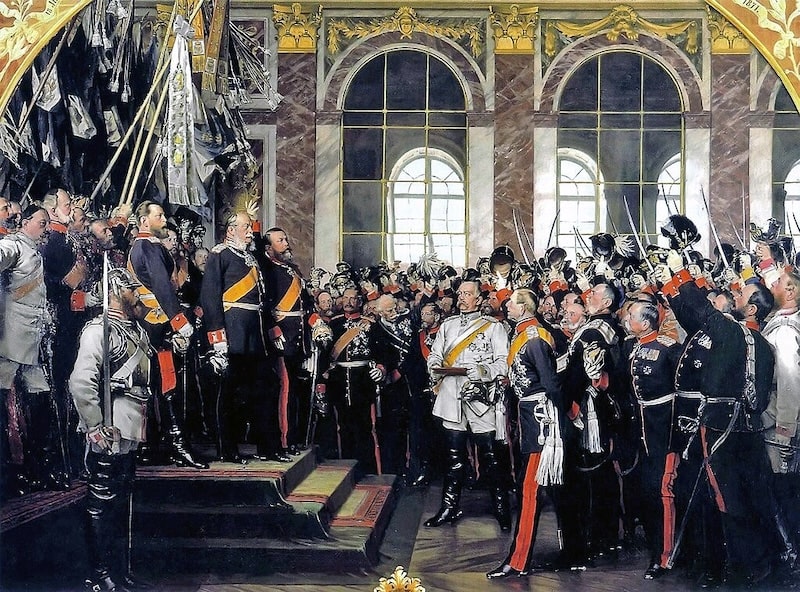 Proclamation of Prussian king Wilhelm I as German Emperor at Versailles, by Anton von Werner
Proclamation of Prussian king Wilhelm I as German Emperor at Versailles, by Anton von WernerNapoleon III was ill by the time of the Franco-Prussian War of 1870-1871, and left Eugénie to run the country (she wasn’t up to the job) while he went to the front.
The country was humiliated at Sedan, Napoleon III was captured, and the empire collapsed, ending the Bonaparte era once and for all*. France was plunged into political turmoil, setting the stage for both Germany’s unification and rise, and the violence of the Paris Commune, all of which shifted Europe’s balance of power for decades.
*Even today, there are those who would like nothing better than a return to the empire under one of Napoleon’s offspring, perhaps Jean-Christophe, Prince Napoléon, a descendant of Napoleon’s younger brother Jérôme Bonaparte.
Before you go...
There are so many ways stories of love are intertwined with French history, and what happened in the bedroom often shaped what happened in politics or on the battlefield.
These nine stories show that clearly...

